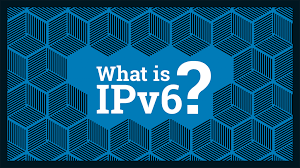In recent years, the number of devices connected to the internet has exploded. The number of devices with access to the internet grows daily, and they all need an IP address. The current version of the IP address, IPv4, is running out of addresses. That’s where IPv6 comes in.
IPv6 is the next generation IP address, as it is a 128-bit address, meaning there are many more addresses than there are with IPv4.
How is IPv6 different from IPv4?
IPv6 is the most up-to-date version of the IP, the standard that defines how computers connect and share information over a network. IPv4 is the previous version of IP.
IPv6’s purpose was to stop IP address limitations and security issues with its predecessor. IPv6 addresses are considerably larger than IPv4 addresses, so many more are available. In addition, IPv6 includes built-in security features that were not present in IPv4.
If you’re looking to download VPN that supports IPv6, Ivacy VPN is a great option. Ivacy VPN has servers in 100+ locations worldwide, provides high-speed connections with no data limits, and much more.
What are the benefits of IPv6?
There are many benefits of IPv6, and it is essential to understand them if you plan to deploy this newer version of the Internet Protocol. Here are the top benefits of IPv6:
Increased address space: One of the most noticeable benefits of IPv6 is the increased address space because IPv6 uses 128-bit addresses, as opposed to the 32-bit addresses used in IPv4. It means there can be a virtually unlimited number of unique addresses with IPv6.
Improved security: The increase in address space of IPv6 allows for more addresses to be assigned to devices and gives network administrators more flexibility in configuring their networks. In addition, IPv6 includes several security enhancements, such as support for IPsec and authentication headers. These features prevent hackers from eavesdropping or spoofing communications.
Better quality of service: With IPv6, it is easier to provide a better service (quality of service). It can help ensure that your data packets are delivered reliably and with less delay. In addition, IPv6 can help reduce the need for network congestion control mechanisms, which can further improve the quality of service.
Cons of IPv6
A few minor cons to IPv6 should be considered before its adoption.
One con is the lack of backward compatibility with IPv4. It means that any devices or applications that only support IPv4 will not be able to communicate with devices using IPv6. But it has a solution that will be discussed further below.
Deployment of IPv6 can be costly as it requires changes to both hardware and software.
Do I need IPv6?
There is immense debate in the tech world about whether or not IPv6 is necessary. Some say that it’s a waste of time and money, while others argue that it’s essential for the future of the internet. So, do you need IPv6?
If you’re unsure what IPv6 is, it’s the next generation of the internet protocol. As we discussed earlier, It’s designed to replace IPv4, the most widely used internet protocol. IPv6 has a lot of benefits over IPv4, including a much larger address space and better security. It has vast benefits. So everyone needs IPv6.
So why hasn’t everyone adopted IPv6? Well, the problem is that it’s not compatible with IPv4. If you want to use IPv6, you need a new router to support it.
How do I get started with IPv6?
Assuming you would like tips for those who are new to using IPv6:
If you’re new to using IPv6, don’t worry–getting started is easy! The first step is to buy a VPN, like Ivacy VPN. A VPN will allow you to use IPv6 on any device without going through your ISP. It is the solution to the first problem I discussed in the heading of the cons of IPv6.
Once you have a VPN, the next step is to configure your router. Most routers these days come with IPv6 support built in, so all you need to do is enable it. If your router doesn’t support IPv6, you’ll need to upgrade it.
Once your router is configured, the final step is to test your connection. You can do this by visiting a website that offers an IPv6 test. If everything is working correctly, you should be able to connect and use IPv6!
Conclusion
In conclusion, IPv6 is the latest Internet Protocol version, and it is necessary to use it to keep up with the increasing demand for internet addresses. Despite this, many organizations have not made the switch to IPv6 yet. It is likely because of the expense and lack of understanding about how it works. Hopefully, this article has shed some light on the topic and encouraged you to do some more research on your own.










![Anso FG Reviews: UPDATED 2024 [ansofg.com] Anso FG Reviews UPDATED 2024 [ansofg.com]](/wp-content/uploads/2023/12/Anso-FG-Reviews-UPDATED-2024-ansofg.com_-100x70.png)







